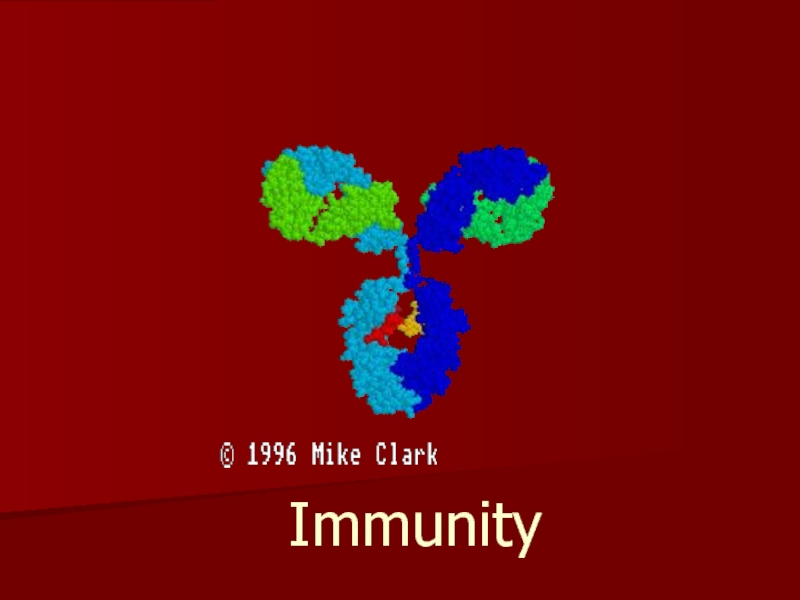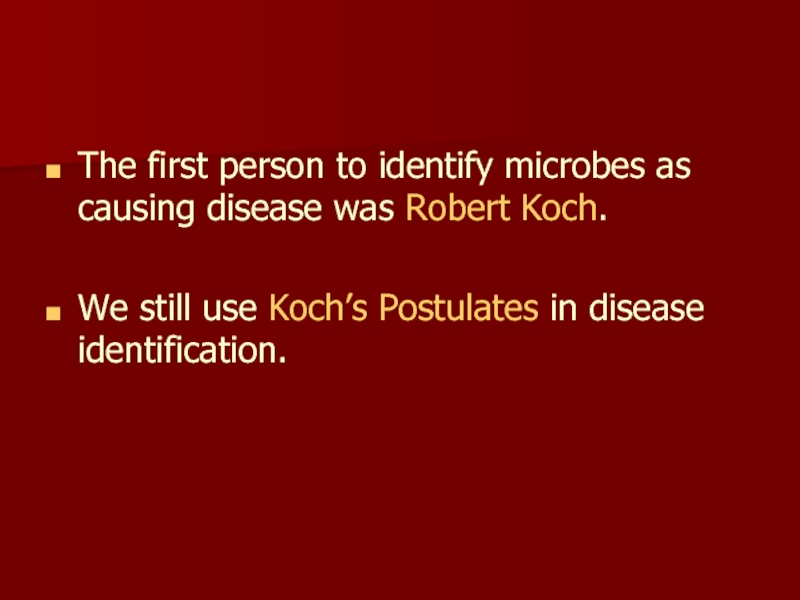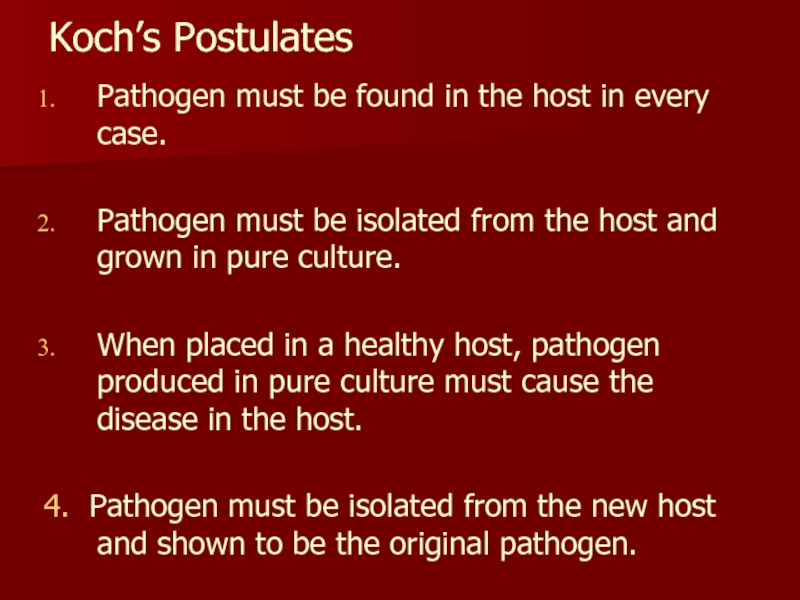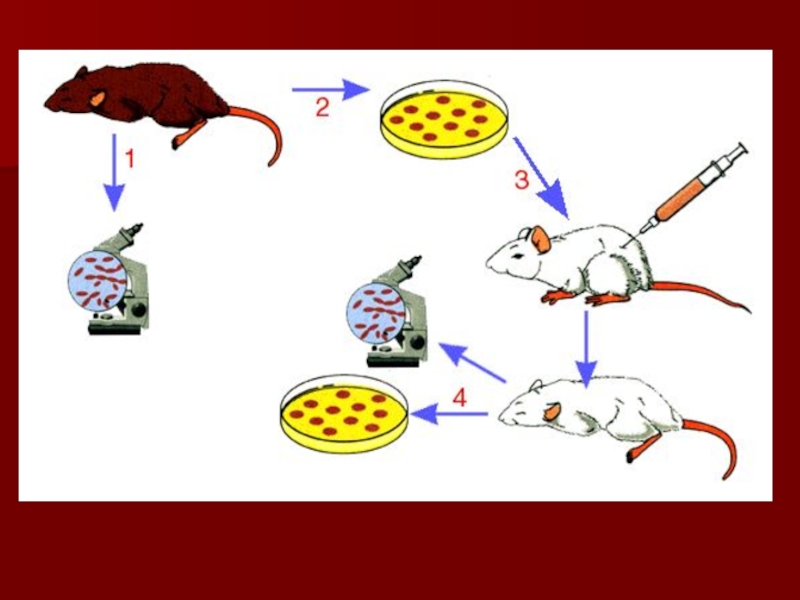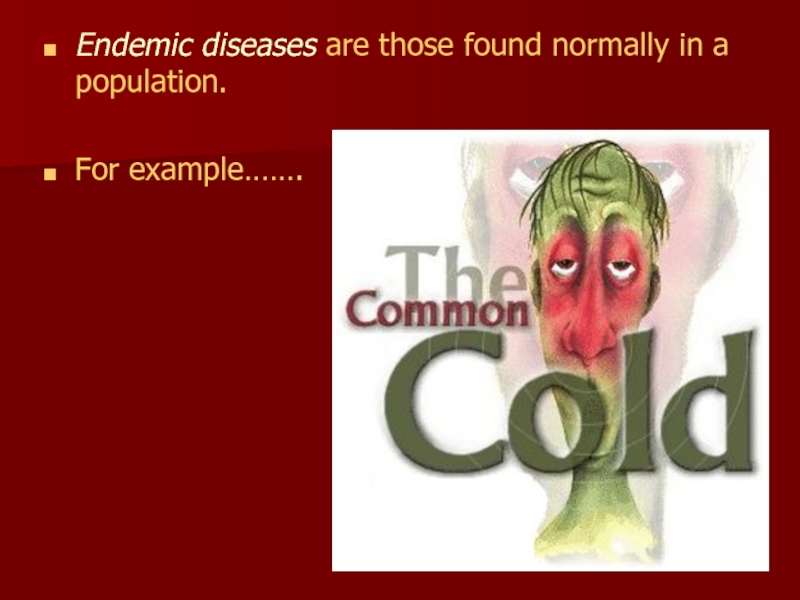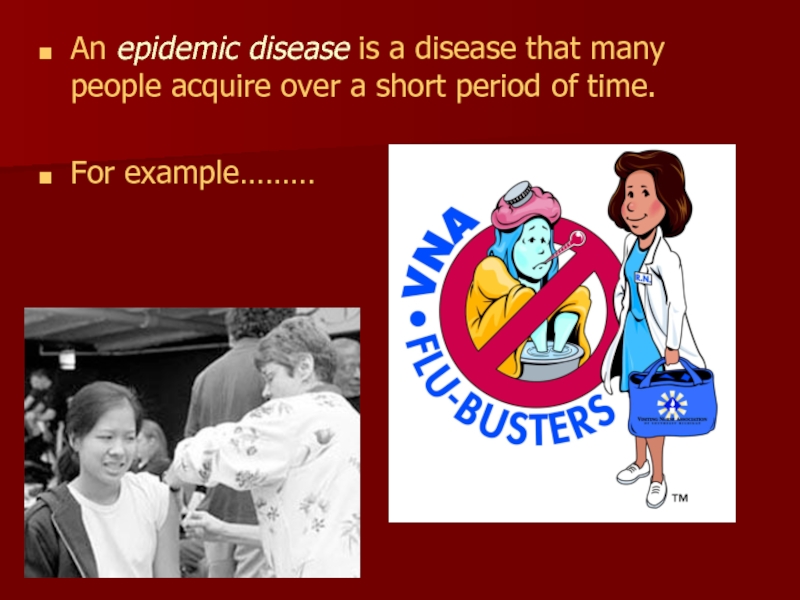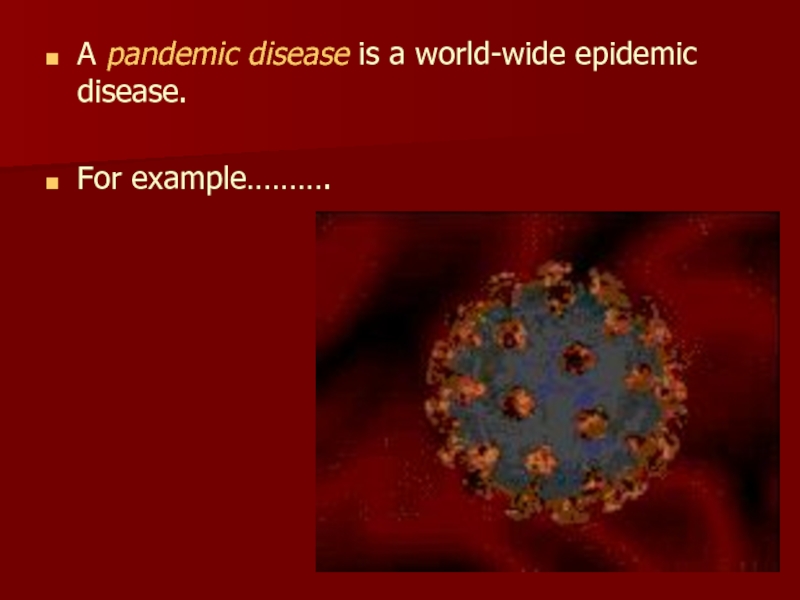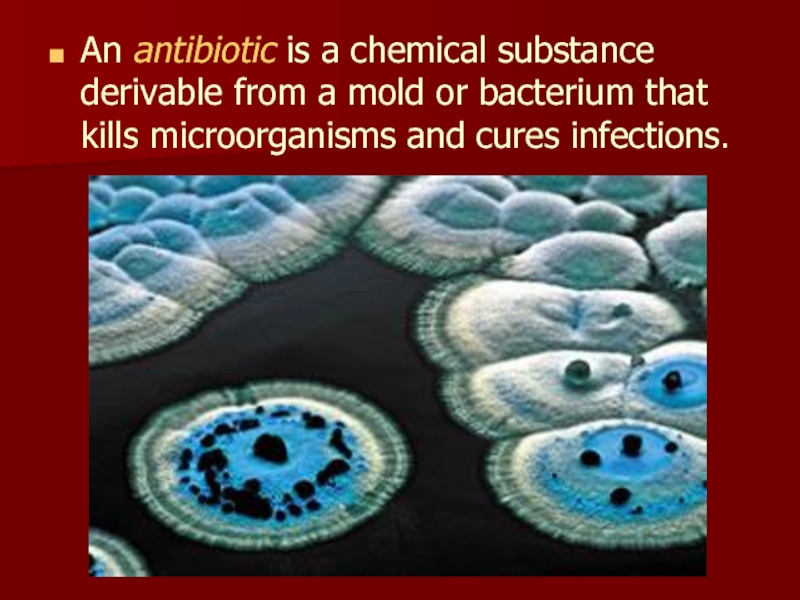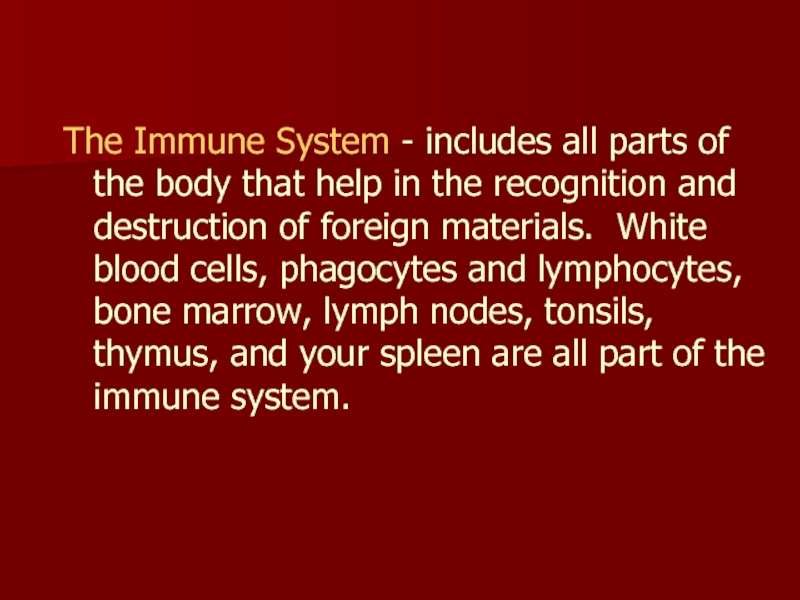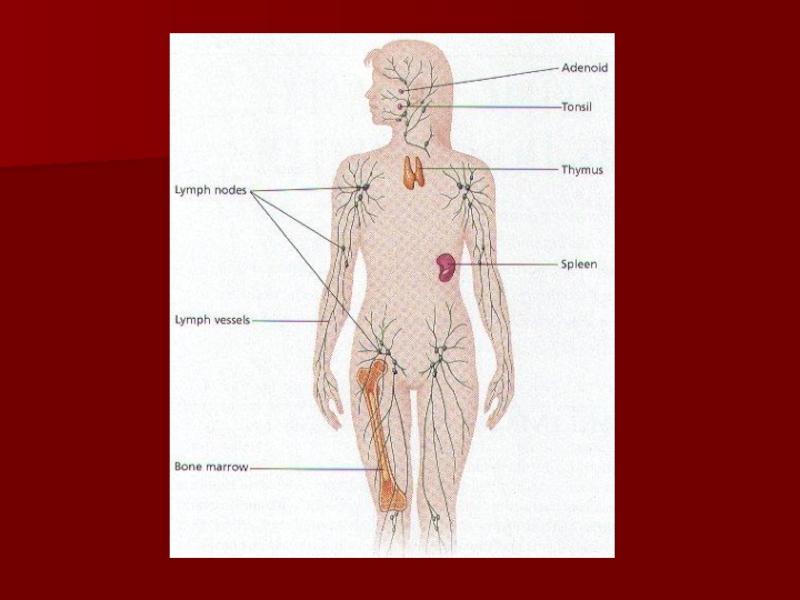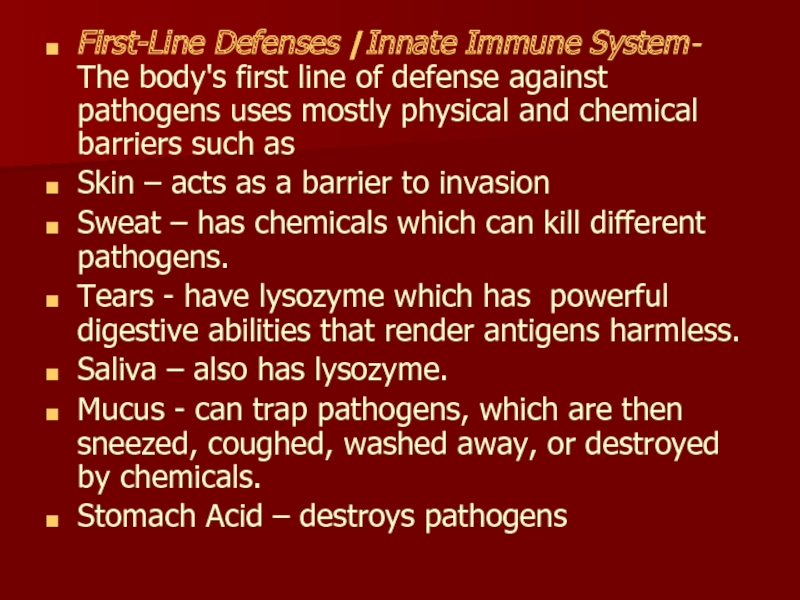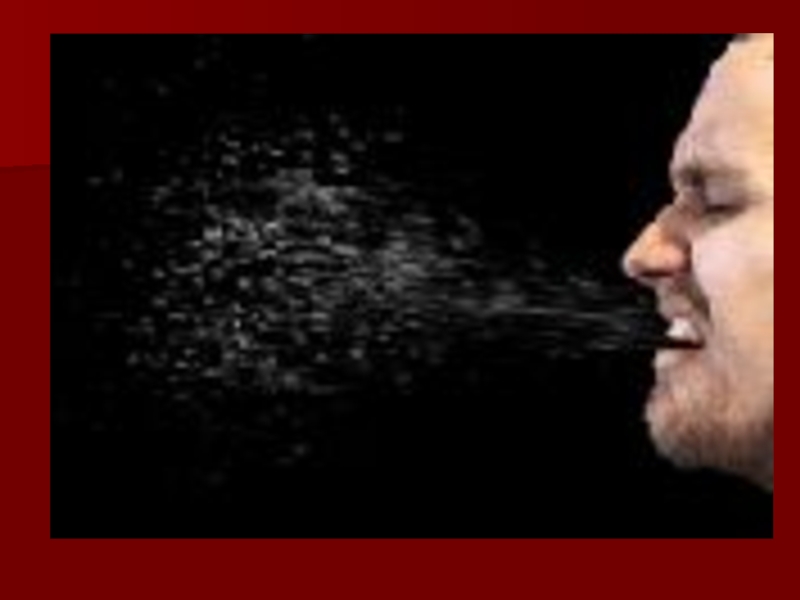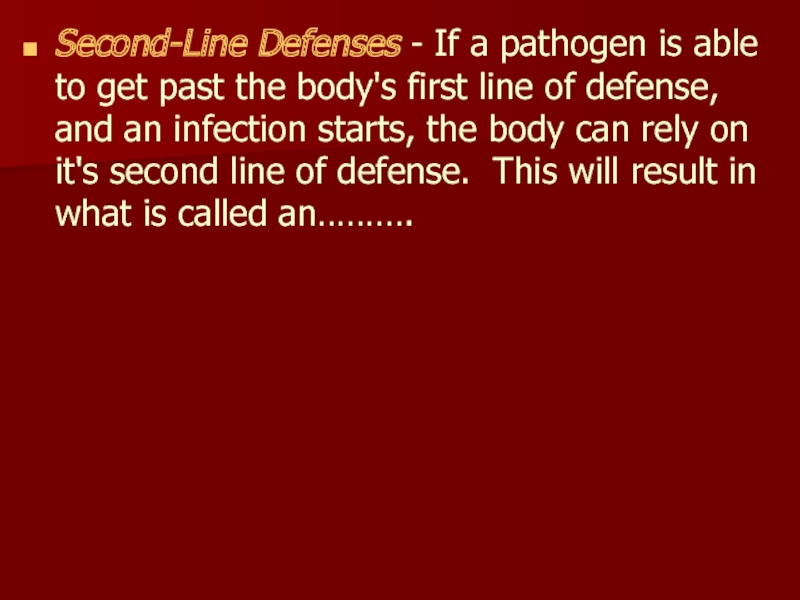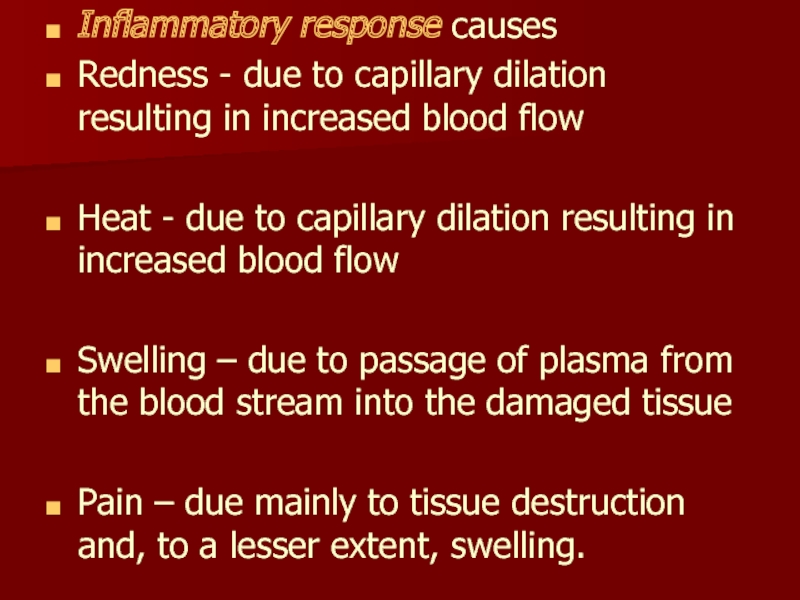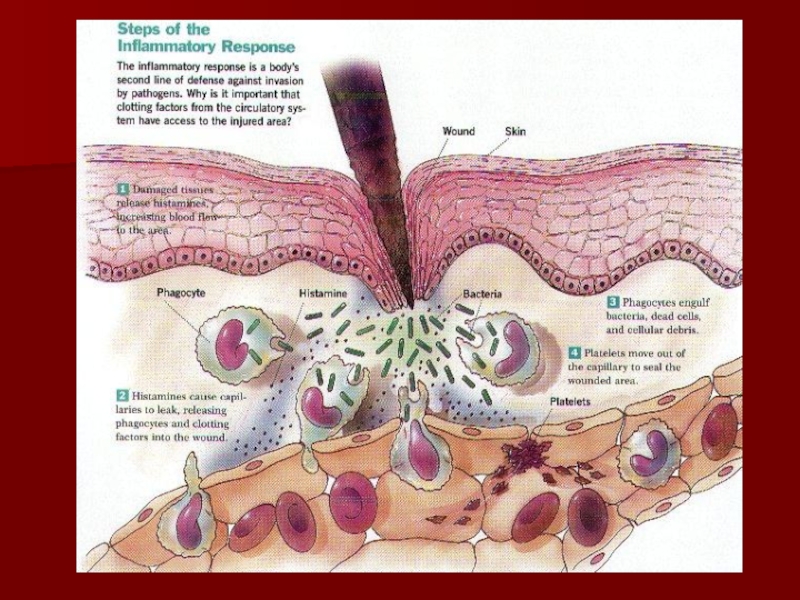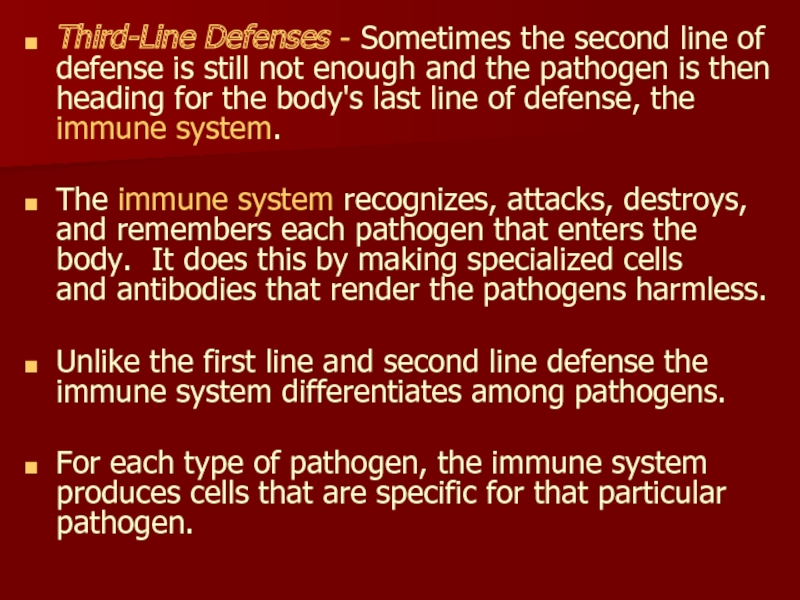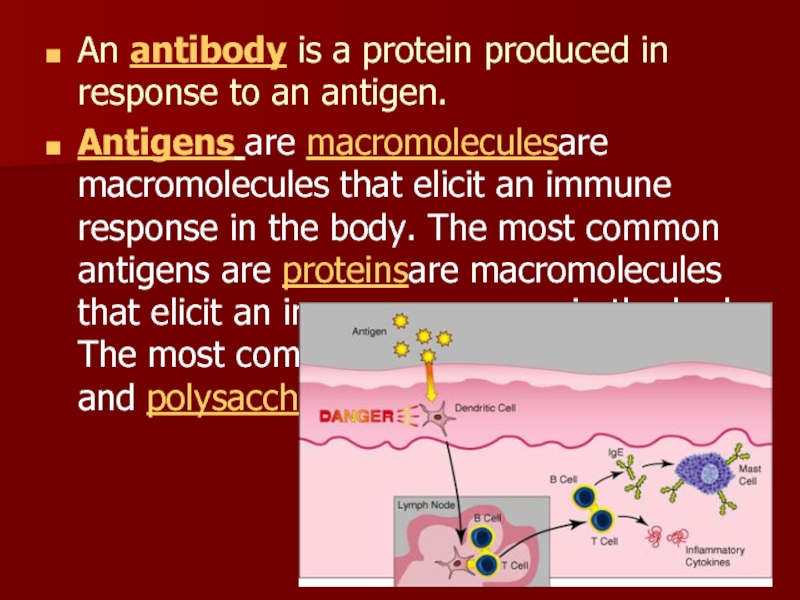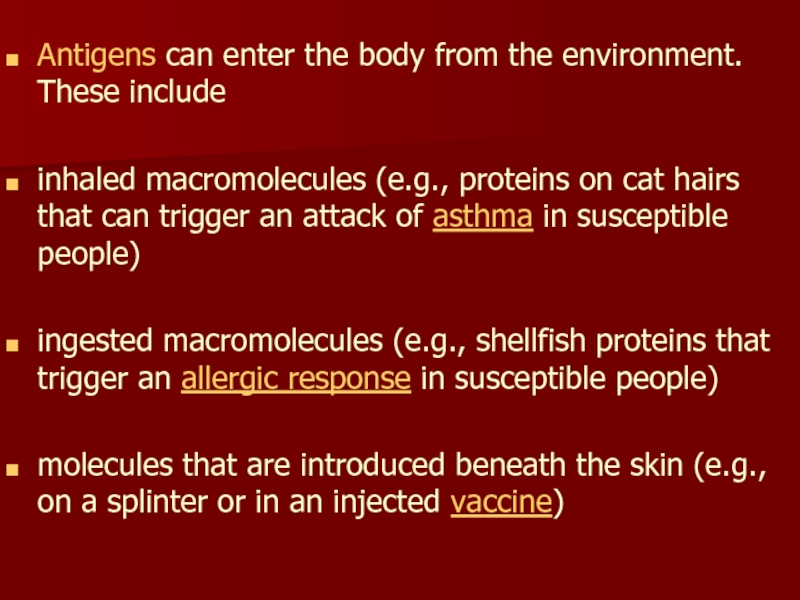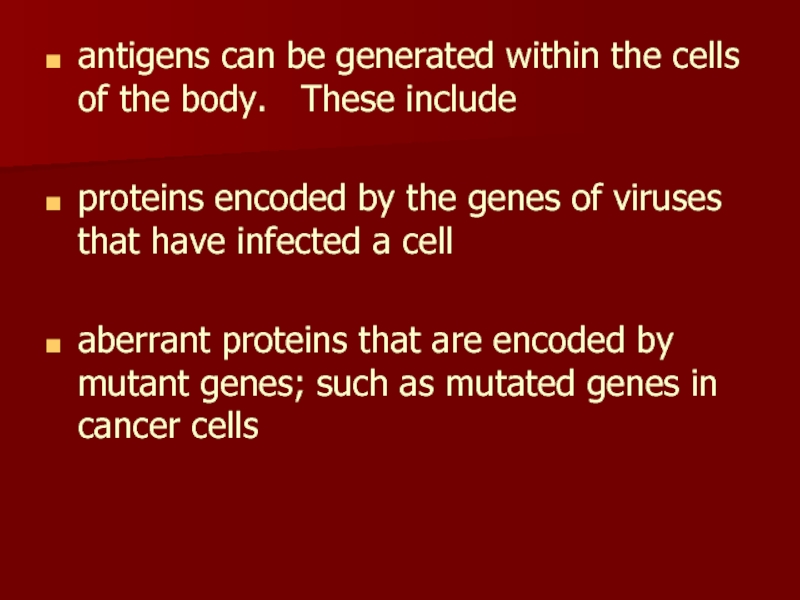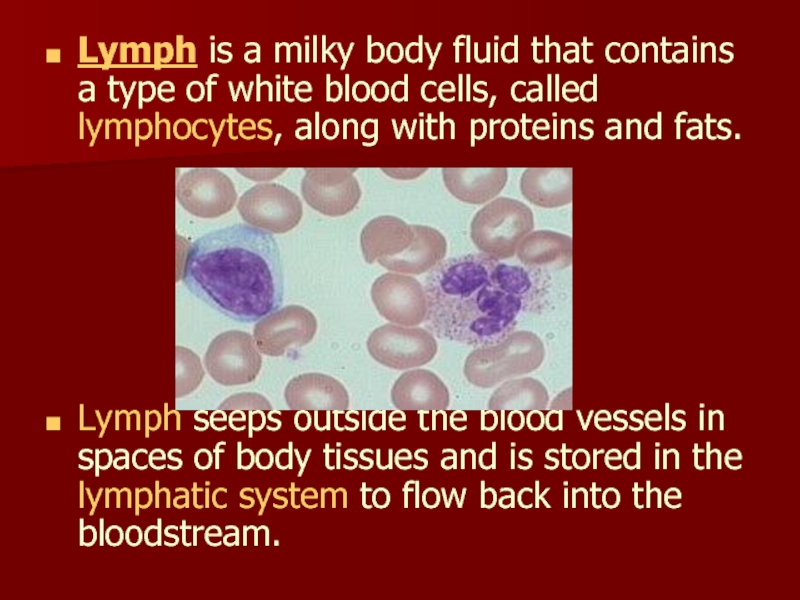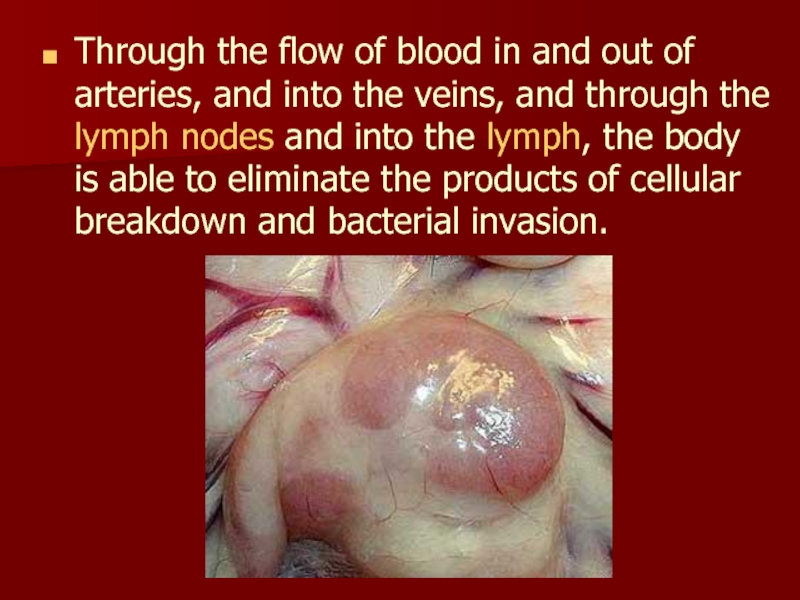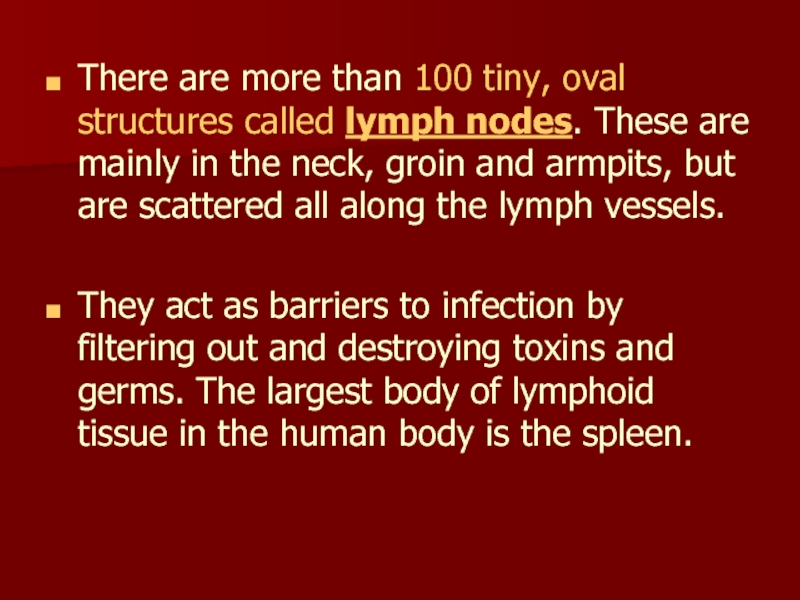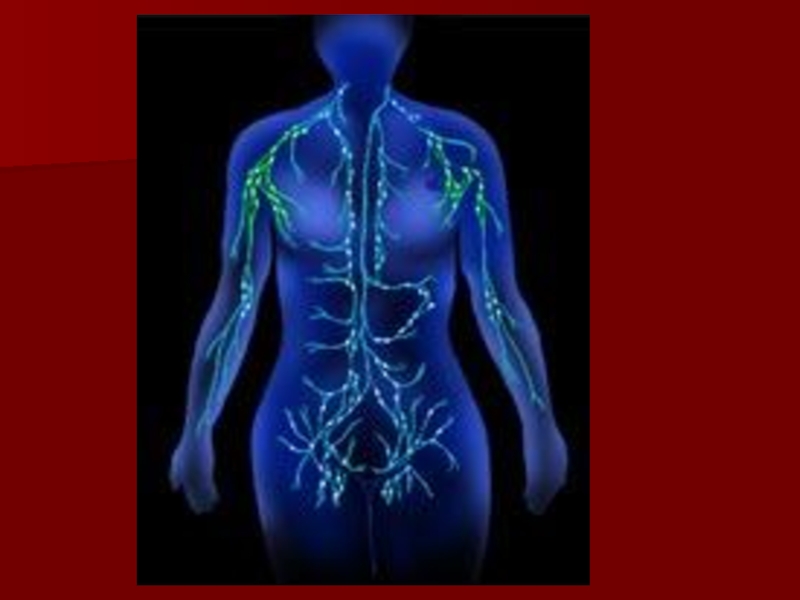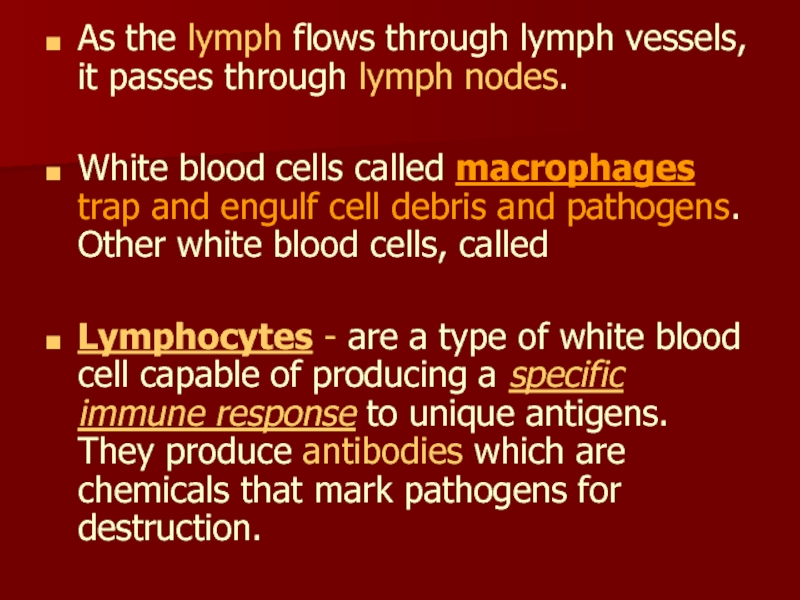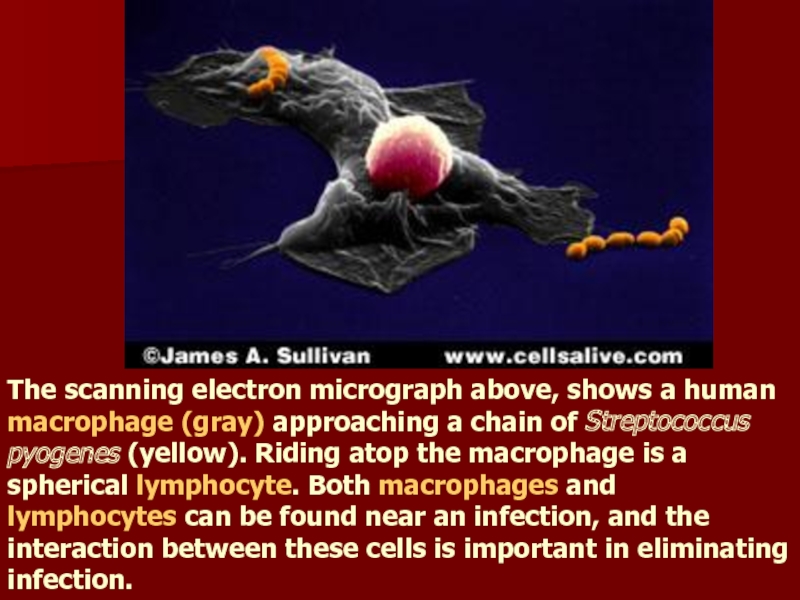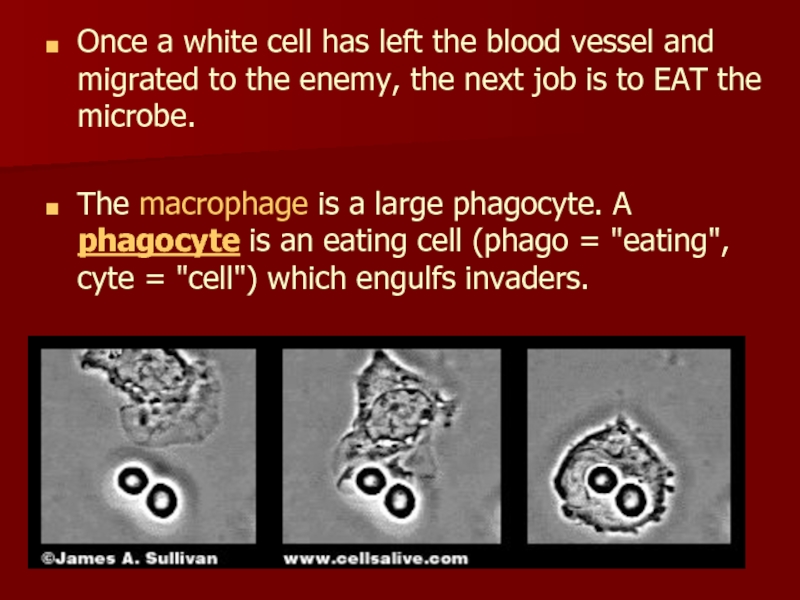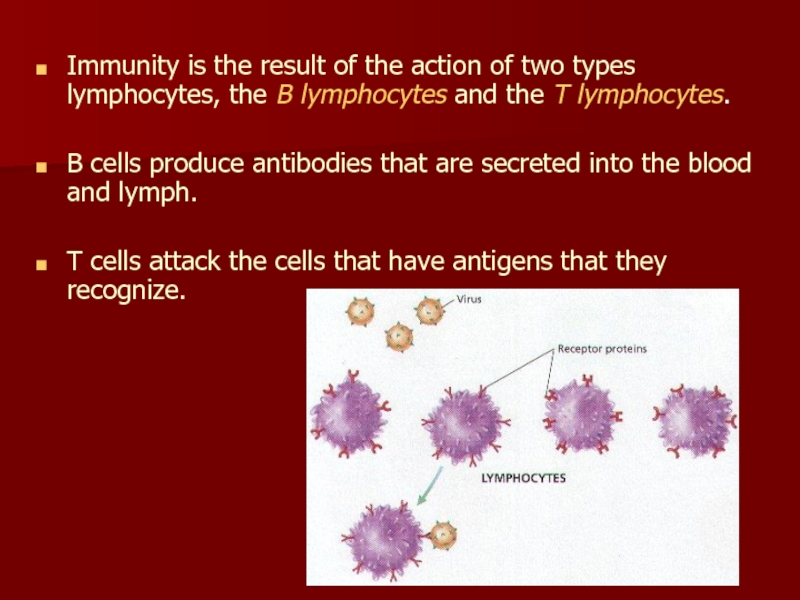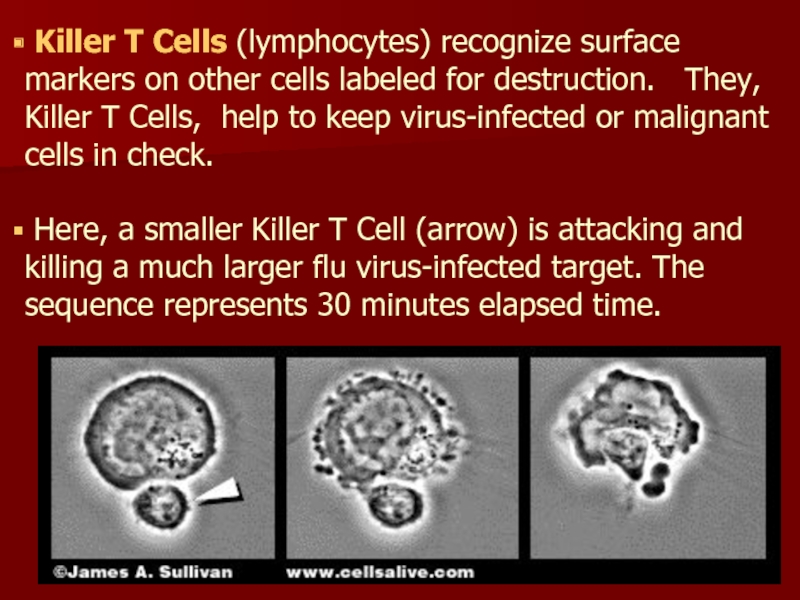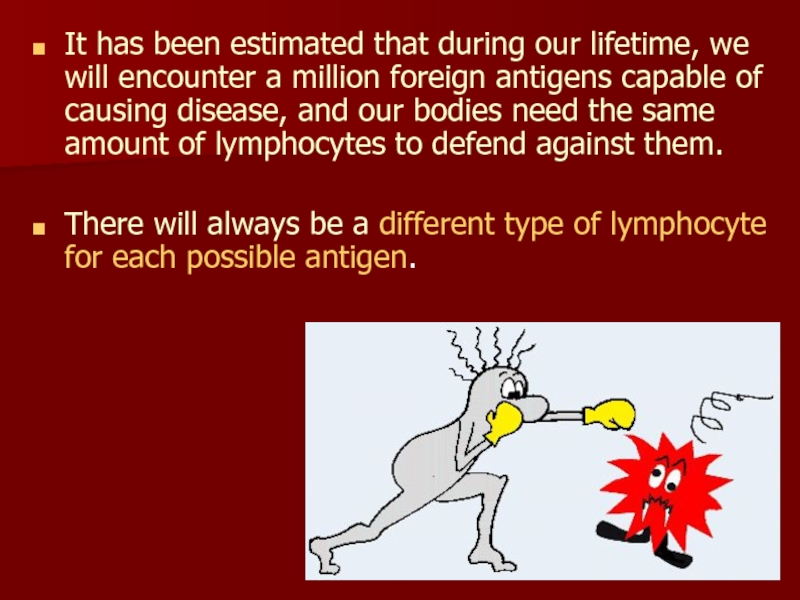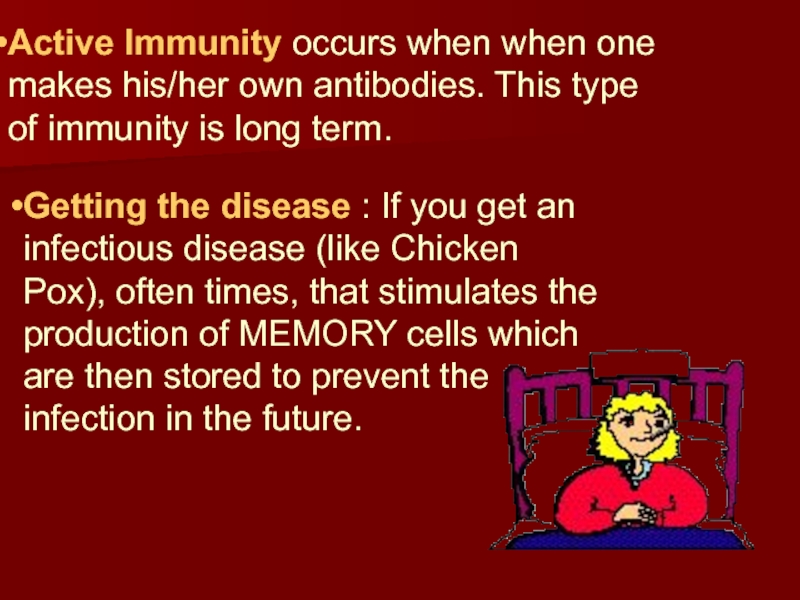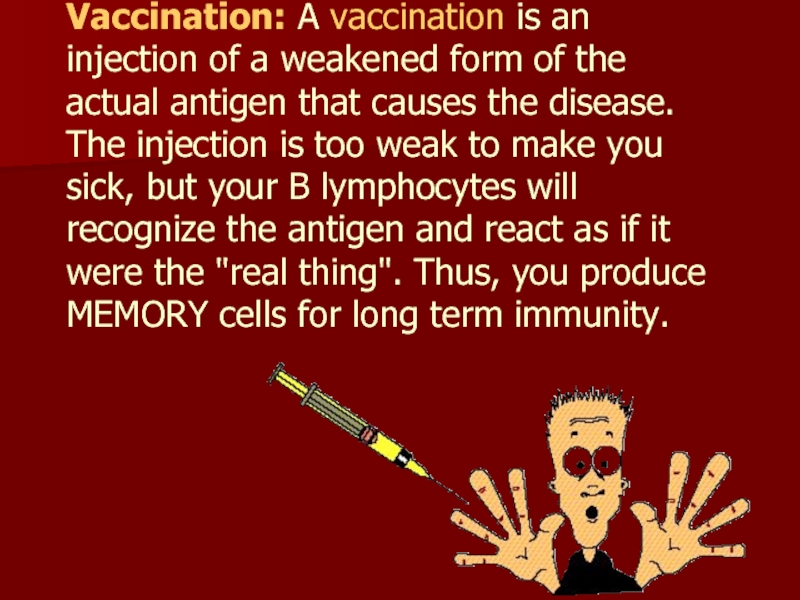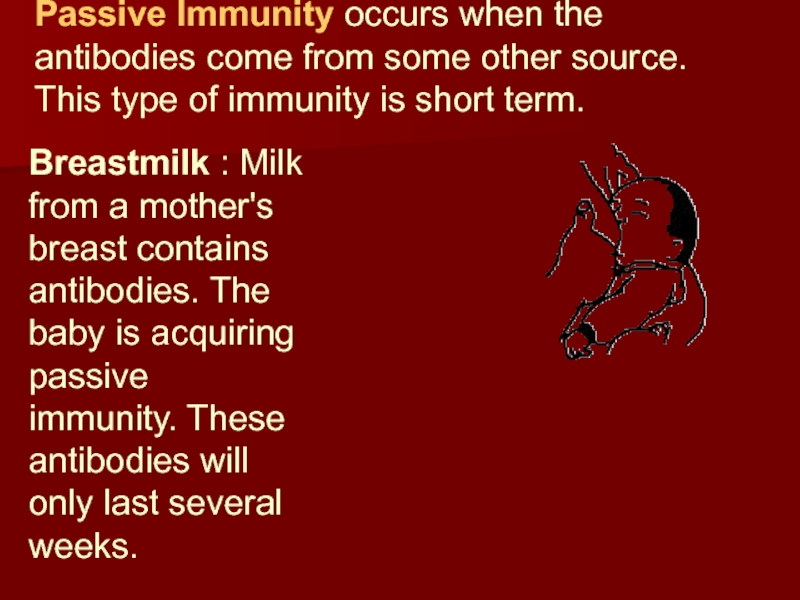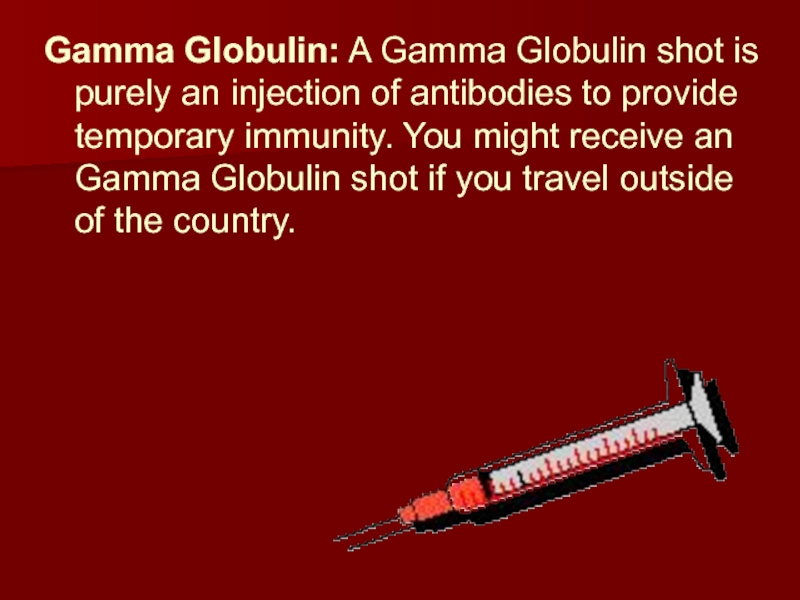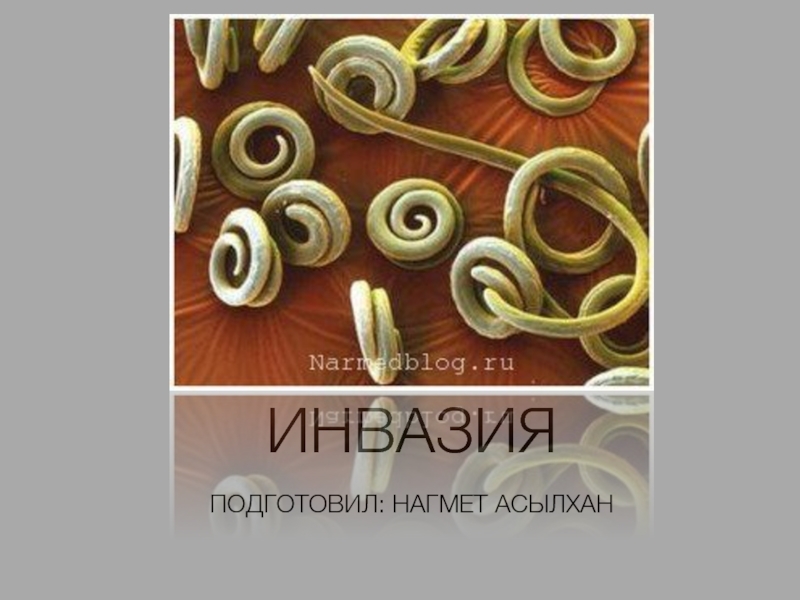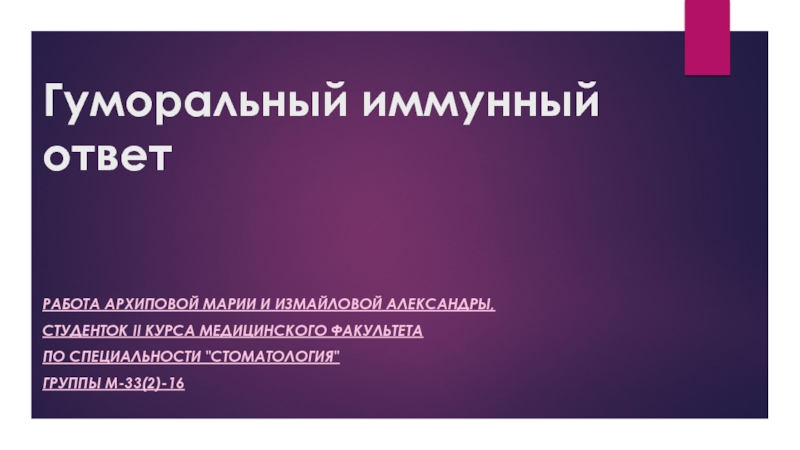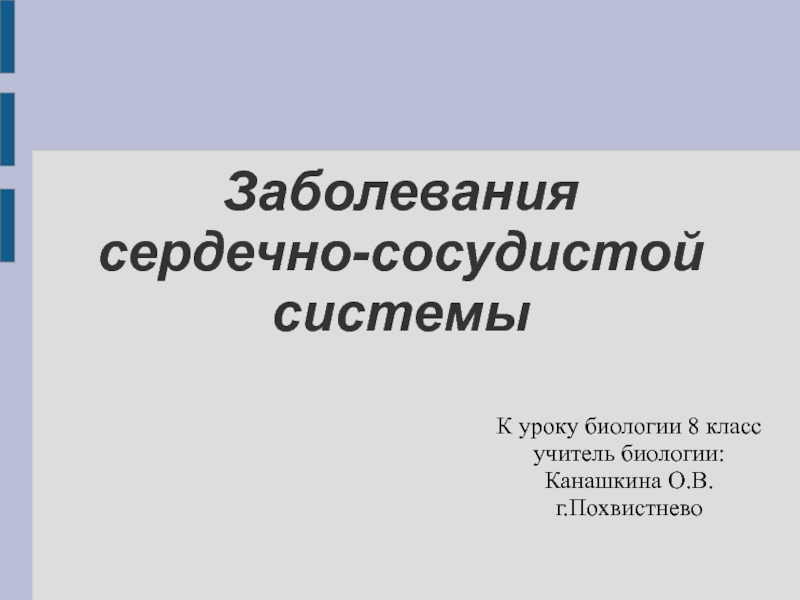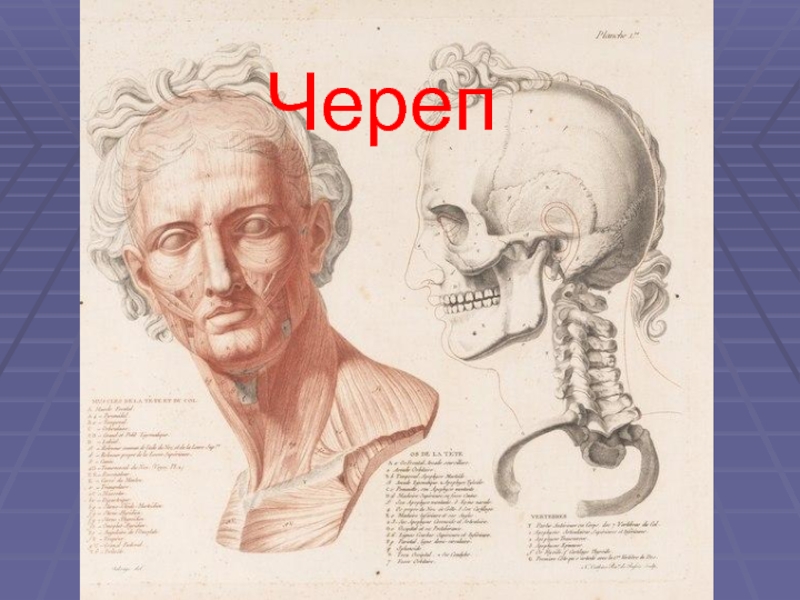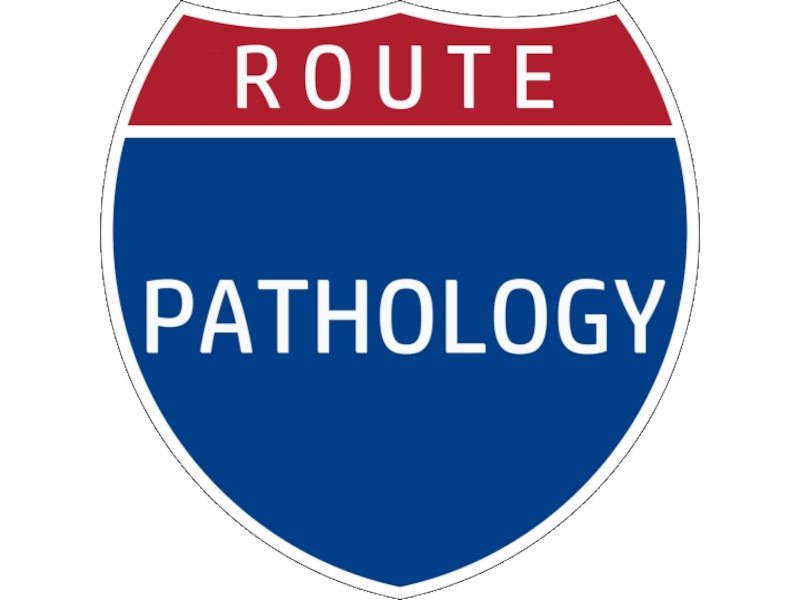- Главная
- Разное
- Дизайн
- Бизнес и предпринимательство
- Аналитика
- Образование
- Развлечения
- Красота и здоровье
- Финансы
- Государство
- Путешествия
- Спорт
- Недвижимость
- Армия
- Графика
- Культурология
- Еда и кулинария
- Лингвистика
- Английский язык
- Астрономия
- Алгебра
- Биология
- География
- Детские презентации
- Информатика
- История
- Литература
- Маркетинг
- Математика
- Медицина
- Менеджмент
- Музыка
- МХК
- Немецкий язык
- ОБЖ
- Обществознание
- Окружающий мир
- Педагогика
- Русский язык
- Технология
- Физика
- Философия
- Химия
- Шаблоны, картинки для презентаций
- Экология
- Экономика
- Юриспруденция
Immunity. Koch’s Postulates презентация
Содержание
- 1. Immunity. Koch’s Postulates
- 2. The first person to identify microbes as
- 3. Koch’s Postulates Pathogen must be found in
- 5. Endemic diseases are those found normally in a population. For example…….
- 6. An epidemic disease is a disease that
- 7. A pandemic disease is a world-wide epidemic disease. For example……….
- 8. An antibiotic is a chemical substance derivable
- 9. The Immune System - includes all parts
- 11. First-Line Defenses /Innate Immune System- The body's first
- 13. Second-Line Defenses - If a pathogen is
- 14. Inflammatory response causes Redness - due
- 16. Third-Line Defenses - Sometimes the second line of
- 17. An antibody is a protein produced
- 18. Antigens can enter the body from the
- 19. antigens can be generated within the cells
- 20. Lymph is a milky body fluid that
- 21. Through the flow of blood in and
- 22. There are more than 100 tiny, oval
- 24. As the lymph flows through lymph vessels,
- 25. The scanning electron micrograph above, shows a
- 26. Once a white cell has left the
- 27. Immunity is the result of the
- 28. Killer T Cells (lymphocytes) recognize surface
- 29. It has been estimated that during our
- 30. Active Immunity occurs when when one makes
- 31. Vaccination: A vaccination is an injection of
- 32. Passive Immunity occurs when the antibodies come
- 33. Gamma Globulin: A Gamma Globulin shot is
Слайд 2The first person to identify microbes as causing disease was Robert
Koch.
We still use Koch’s Postulates in disease identification.
We still use Koch’s Postulates in disease identification.
Слайд 3Koch’s Postulates
Pathogen must be found in the host in every case.
Pathogen
must be isolated from the host and grown in pure culture.
When placed in a healthy host, pathogen produced in pure culture must cause the disease in the host.
4. Pathogen must be isolated from the new host and shown to be the original pathogen.
When placed in a healthy host, pathogen produced in pure culture must cause the disease in the host.
4. Pathogen must be isolated from the new host and shown to be the original pathogen.
Слайд 6An epidemic disease is a disease that many people acquire over
a short period of time.
For example………
For example………
Слайд 8An antibiotic is a chemical substance derivable from a mold or
bacterium that kills microorganisms and cures infections.
Слайд 9The Immune System - includes all parts of the body that
help in the recognition and destruction of foreign materials. White blood cells, phagocytes and lymphocytes, bone marrow, lymph nodes, tonsils, thymus, and your spleen are all part of the immune system.
Слайд 11First-Line Defenses /Innate Immune System- The body's first line of defense against
pathogens uses mostly physical and chemical barriers such as
Skin – acts as a barrier to invasion
Sweat – has chemicals which can kill different pathogens.
Tears - have lysozyme which has powerful digestive abilities that render antigens harmless.
Saliva – also has lysozyme.
Mucus - can trap pathogens, which are then sneezed, coughed, washed away, or destroyed by chemicals.
Stomach Acid – destroys pathogens
Skin – acts as a barrier to invasion
Sweat – has chemicals which can kill different pathogens.
Tears - have lysozyme which has powerful digestive abilities that render antigens harmless.
Saliva – also has lysozyme.
Mucus - can trap pathogens, which are then sneezed, coughed, washed away, or destroyed by chemicals.
Stomach Acid – destroys pathogens
Слайд 13Second-Line Defenses - If a pathogen is able to get past
the body's first line of defense, and an infection starts, the body can rely on it's second line of defense. This will result in what is called an……….
Слайд 14Inflammatory response causes
Redness - due to capillary dilation resulting in
increased blood flow
Heat - due to capillary dilation resulting in increased blood flow
Swelling – due to passage of plasma from the blood stream into the damaged tissue
Pain – due mainly to tissue destruction and, to a lesser extent, swelling.
Heat - due to capillary dilation resulting in increased blood flow
Swelling – due to passage of plasma from the blood stream into the damaged tissue
Pain – due mainly to tissue destruction and, to a lesser extent, swelling.
Слайд 16Third-Line Defenses - Sometimes the second line of defense is still not
enough and the pathogen is then heading for the body's last line of defense, the immune system.
The immune system recognizes, attacks, destroys, and remembers each pathogen that enters the body. It does this by making specialized cells and antibodies that render the pathogens harmless.
Unlike the first line and second line defense the immune system differentiates among pathogens.
For each type of pathogen, the immune system produces cells that are specific for that particular pathogen.
The immune system recognizes, attacks, destroys, and remembers each pathogen that enters the body. It does this by making specialized cells and antibodies that render the pathogens harmless.
Unlike the first line and second line defense the immune system differentiates among pathogens.
For each type of pathogen, the immune system produces cells that are specific for that particular pathogen.
Слайд 17
An antibody is a protein produced in response to an antigen.
Antigens
are macromoleculesare macromolecules that elicit an immune response in the body. The most common antigens are proteinsare macromolecules that elicit an immune response in the body. The most common antigens are proteins and polysaccharides.
Слайд 18Antigens can enter the body from the environment. These include
inhaled macromolecules
(e.g., proteins on cat hairs that can trigger an attack of asthma in susceptible people)
ingested macromolecules (e.g., shellfish proteins that trigger an allergic response in susceptible people)
molecules that are introduced beneath the skin (e.g., on a splinter or in an injected vaccine)
ingested macromolecules (e.g., shellfish proteins that trigger an allergic response in susceptible people)
molecules that are introduced beneath the skin (e.g., on a splinter or in an injected vaccine)
Слайд 19antigens can be generated within the cells of the body.
These include
proteins encoded by the genes of viruses that have infected a cell
aberrant proteins that are encoded by mutant genes; such as mutated genes in cancer cells
proteins encoded by the genes of viruses that have infected a cell
aberrant proteins that are encoded by mutant genes; such as mutated genes in cancer cells
Слайд 20Lymph is a milky body fluid that contains a type of
white blood cells, called lymphocytes, along with proteins and fats.
Lymph seeps outside the blood vessels in spaces of body tissues and is stored in the lymphatic system to flow back into the bloodstream.
Lymph seeps outside the blood vessels in spaces of body tissues and is stored in the lymphatic system to flow back into the bloodstream.
Слайд 21Through the flow of blood in and out of arteries, and
into the veins, and through the lymph nodes and into the lymph, the body is able to eliminate the products of cellular breakdown and bacterial invasion.
Слайд 22There are more than 100 tiny, oval structures called lymph nodes.
These are mainly in the neck, groin and armpits, but are scattered all along the lymph vessels.
They act as barriers to infection by filtering out and destroying toxins and germs. The largest body of lymphoid tissue in the human body is the spleen.
They act as barriers to infection by filtering out and destroying toxins and germs. The largest body of lymphoid tissue in the human body is the spleen.
Слайд 24As the lymph flows through lymph vessels, it passes through lymph
nodes.
White blood cells called macrophages trap and engulf cell debris and pathogens. Other white blood cells, called
Lymphocytes - are a type of white blood cell capable of producing a specific immune response to unique antigens. They produce antibodies which are chemicals that mark pathogens for destruction.
White blood cells called macrophages trap and engulf cell debris and pathogens. Other white blood cells, called
Lymphocytes - are a type of white blood cell capable of producing a specific immune response to unique antigens. They produce antibodies which are chemicals that mark pathogens for destruction.
Слайд 25The scanning electron micrograph above, shows a human macrophage (gray) approaching
a chain of Streptococcus pyogenes (yellow). Riding atop the macrophage is a spherical lymphocyte. Both macrophages and lymphocytes can be found near an infection, and the interaction between these cells is important in eliminating infection.
Слайд 26Once a white cell has left the blood vessel and migrated
to the enemy, the next job is to EAT the microbe.
The macrophage is a large phagocyte. A phagocyte is an eating cell (phago = "eating", cyte = "cell") which engulfs invaders.
The macrophage is a large phagocyte. A phagocyte is an eating cell (phago = "eating", cyte = "cell") which engulfs invaders.
Слайд 27
Immunity is the result of the action of two types lymphocytes,
the B lymphocytes and the T lymphocytes.
B cells produce antibodies that are secreted into the blood and lymph.
T cells attack the cells that have antigens that they recognize.
B cells produce antibodies that are secreted into the blood and lymph.
T cells attack the cells that have antigens that they recognize.
Слайд 28 Killer T Cells (lymphocytes) recognize surface markers on other cells
labeled for destruction. They, Killer T Cells, help to keep virus-infected or malignant cells in check.
Here, a smaller Killer T Cell (arrow) is attacking and killing a much larger flu virus-infected target. The sequence represents 30 minutes elapsed time.
Here, a smaller Killer T Cell (arrow) is attacking and killing a much larger flu virus-infected target. The sequence represents 30 minutes elapsed time.
Слайд 29It has been estimated that during our lifetime, we will encounter
a million foreign antigens capable of causing disease, and our bodies need the same amount of lymphocytes to defend against them.
There will always be a different type of lymphocyte for each possible antigen.
There will always be a different type of lymphocyte for each possible antigen.
Слайд 30Active Immunity occurs when when one makes his/her own antibodies. This
type of immunity is long term.
Слайд 31Vaccination: A vaccination is an injection of a weakened form of
the actual antigen that causes the disease. The injection is too weak to make you sick, but your B lymphocytes will recognize the antigen and react as if it were the "real thing". Thus, you produce MEMORY cells for long term immunity.
Слайд 32Passive Immunity occurs when the antibodies come from some other source.
This type of immunity is short term.
Слайд 33Gamma Globulin: A Gamma Globulin shot is purely an injection of
antibodies to provide temporary immunity. You might receive an Gamma Globulin shot if you travel outside of the country.
